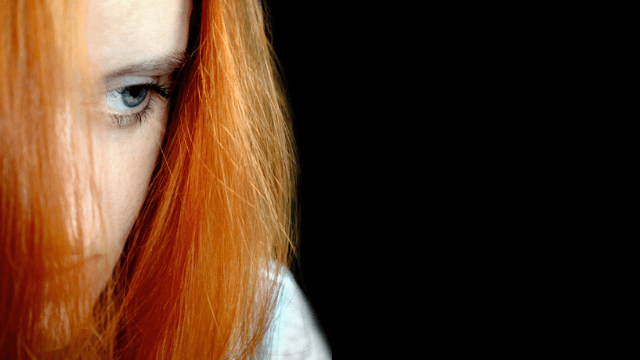This is an article written by our editor at large for Holistic Living Magazine – Edition 1, written about her journey with depression and we take a look at some very alarming statistics.
Full disclosure; I was going through a very torrid time at the end of 2008 and early 2009 and was persuaded to seek professional psychiatric help. Truth be told I knew exactly what was wrong with me.
I honestly didn’t need to be told that I wasn’t in exactly tip top mental health and that my life was somewhat of a mess.
As Ani Neradilkova covers in greater detail in her article ‘Depression, Expression and Suppression’ later in the magazine, I was most definitely suppressing my true self; I was in a relationship that just did not, and could not let that truth be spoken about.
Also my work environment was stifling, a constant tread mill of 60 hour weeks, immense pressure to solve every problem and meet every deadline was taking its toll.
Prue Proctor in her article healing depression through Reiki, talks through how this type of environment can invoke depression through a belief that you know what the future will bring; more of the same, with no light at the end of the tunnel.
With both triggers I really felt as though there was no way forward, I really couldn’t see how I could change my work environment, nor how to stop hiding myself.
That all started to change when I finally did see someone, and that someone was Dr. Fintan Harte, who I can arguably say, saved my life.
His first diagnosis was clinical depression, with my thoughts not far away from what Elaine C. Torrance-Gingrich says in her article, depression and the law of attraction, and his second, gender dysphoria, well that wasn’t exactly new either.
What he did next though was to delve into what was happening and why, what he didn’t do was recommend a course of antidepressants.
The fact that he didn’t reach for the prescription pad immediately, I am eternally grateful for, and the fact that the succession of people I have seen since, haven’t either, is also a source of solace for me.
Now this approach to handling depression isn’t necessarily for everyone, in many instances the tunnel is so dark and long, that the only way to take a step forward is via such a crutch.
Prue talks about Helen who was very grateful for the light being brought back by antidepressants, and from such a position how she got her life back on track.
Thing is, in many ways, when you dig into the overall numbers of people being diagnosed with clinical depression and the rate of prescription of antidepressants then something curious pops up.
It seems that for many Western nations the prescription rate for the population for anti-depressants is twice that the clinical depression diagnosis rate!
An article in the Washington Post details some of the levels of depression in all nations of the world[1] with Australia around the 4% mark and America on or around 4.5%.
Yet, in Australia the prescription rate for anti-depressants is about 9% of the population[2] and in America the rate is about 11%[3] which when you compare the two is about approximately twice the medical condition, which does seem to indicate something odd is going on.
Now when this is correlated with the level of mental health supervision for the prescription of antidepressants, only between a third and half, of all patients[4], then you may start to question some of the underlying principles.
Only when you add in the rates of anxiety diagnosis[5], which typically accompanies depression, do you have a fuller picture of how and why anti-depressants are being diagnosed.
Even then there seems to be a level of prescription that doesn’t quite gel with what should be a treatment that is reserved only for the most serious cases of depression and anxiety.
What underpins all this is the fact that until the 1950s such types of drugs didn’t even exist.
In 1951 early trials of an anti-tuberculosis drug had the side effect of renewed vigor[6], which was closely followed by further trials in Cincinnati and Paris, as well as the development in Switzerland of tricyclic forms of drugs for use as antidepressants.
By the 1960s, while there were still more drugs available to treat depression, it was still felt “that no more than 50 to 100 individuals per million suffered from the kind of depression that these new drugs would treat”[7].
Now let that number sink in. that is a 0.01% treatment rate, which is several orders of magnitude away from the position today.
So by the end of the 1960s we have a situation where anti-depressants were thought potentially useful for maybe 20 to 30 thousand people in the USA, and yet by 1990, after the development of a novel new forms of anti-depressant, such as the Selective serotonin reuptake inhibitors (SSRI) class of drugs, of which Prozac is the best well known, the prescription rate in the USA was running at over 650,000 per month[8].
Of course within all this context there are some basic figures; 350 million people worldwide have depression, yet only 50% or so get any form of treatment.
In fact in some nations the treatment rate is less than 10%[9]. Furthermore only with the development of such treatments has there been a massive improvement in the overall treatment rate for many forms of mental health.
But it does seem that there is not only a level of over prescription that cannot be good, but also in many cases a level of under prescription too. As Sophie McBain[10] writing in the New Statesmen calls out:
If one in seven of us is taking pills to control or ward off anxiety, are we just medicalising an ordinary human emotion? Did the purveyors of the early anti-anxiety medicines such as Miltown – discovered in the 1940s, and the first in a line of blockbuster drugs including Prozac and Xanax – manage to create a new problem along with the solution they offered?
Fundamentally this is the real question, how do you feel? Are you experiencing natural human emotions, such as grief, sadness, or are you in a far more perilous state that an antidepressant is precisely the help you need?
If the former then you will find the rest of the articles in this edition of Holistic Living Magazine perfect for you. And if the latter then I suggest you seek appropriate medical attention, and perhaps still take into account some of the approaches detailed in these pages.
You can read this article in our quarterly eZine, ‘Holistic Living Magazine,’ look for Edition 1 on this archive page. There’s many more articles about depression waiting for you too!

Cassandra Jones – Editor at large for Holistic Living Magazine
References
Carter, L, (2013), OECD snapshot ranks Australia second in world in anti-depressant prescriptions, accessed 10th May 2015 from http://www.abc.net.au/news/2013-11-22/australia-second-in-world-in-anti-depressant-prescriptions/5110084
Dewey, C, (2013), A stunning map of depression rates around the world’, accessed 10th May 2015 from http://www.washingtonpost.com/blogs/worldviews/wp/2013/11/07/a-stunning-map-of-depression-rates-around-the-world/
Fitzpatrick, L., (2010), A brief history of antidepressants, accessed 10th May 2015 from http://content.time.com/time/health/article/0,8599,1952143,00.html
McBain, S., (2014), Anxiety Nation: why are so many of us ill at ease?, accessed 10th May 2015 from http://www.newstatesman.com/2014/04/anxiety-nation-why-are-so-many-us-so-ill-ease
Pratt, L.A., Brody, D.J., Gu, Q., (2011), Antidepressant Use in Persons Aged 12 and Over: United States, 2005–2008, accessed 10th May 2015 from http://www.cdc.gov/nchs/data/databriefs/db76.htm
Sciencewatch, (2014), 25 years after Prozac, accessed 10th May 2015 from http://sciencewatch.com/sites/sw/files/sw-article/media/sw-depression-infographic.pdf
Wikipedia, Antidepressant, accessed 10th May 2015 from http://en.m.wikipedia.org/wiki/Antidepressant#History
[1] Caitlin Dewey, Washington Post, November 7, 2013
[2] Lucy Carter, ABC, November 22, 2013
[3] Laura Brody, Center for Disease Control, October 2011
[4] Ibid.
[5] Between 10% and 18% of the USA population depending on who is publishing the figures. The high end number comes from a World Health Organisation study in 2002.
[6] Wikipedia, Antidepressant
[7] Ibid.
[8] Laura Fitzpatrick, Time, 2010
[9] Sciencewatch, 2014
[10] Sophie McBain, New Statesman, 2014






